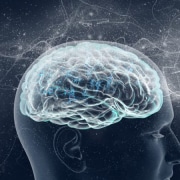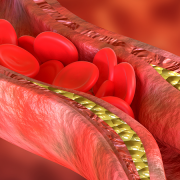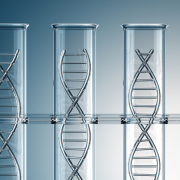Unlocking the secrets of the genome
It was once believed that 99% of our genome was made up of ‘junk’ DNA with no purpose. Recent discoveries suggest this is far from the truth
The human genome has around 20,000 protein-coding genes, which contain the instructions to make specific proteins needed to build, maintain and repair our bodies. These genes make up just 1-2% of our genome and, for a long time, the other 98-99% of our DNA was thought to be ‘junk’. In the last decade, however, increasing use of whole genome sequencing and other ‘omics’ techniques have led to a reconsideration of non-coding regions.
It has long been understood that genes use a three-base code to specify a sequence of amino acids that will form a particular protein. A gene’s DNA sequence is copied into a single strand of RNA (transcription), and this RNA (known as messenger RNA or mRNA) then travels to another part of the cell, where the code is read and a protein assembled according to its instructions (translation). This process is certainly essential in cells, but it doesn’t do justice to the variety of roles both RNA and DNA play.
RNA: new target for therapies
It is becoming increasingly clear that RNA plays many more roles in the regulatory pathways of cells than previously thought. A sequencing method called transcriptome analysis is helping researchers learn more about non-coding RNAs. The transcriptome is the subset of the genome that is copied into RNA – so it includes all the genes that code for proteins as well as RNAs with regulatory functions.
Transcriptome analysis was used in a prostate cancer study from earlier this year that showed how a long non-coding RNA (lncRNA) may be a promising target for new therapies.
Prostate cells rely on male hormones (androgens) to function, so suppressing androgens or their receptors is a common form of treatment, but this has significant side-effects. The lncRNA, found almost exclusively in prostate tumour cells, has a function in androgen receptor signaling. Suppressing expression of the RNA increased tumour cell death and reduced tumour size.
DNA: no transcription needed
Perhaps even more surprisingly, there are pieces of DNA that have profound effects without ever being transcribed. This can seem counter-intuitive, because we are used to thinking about DNA as data, or as a repository of information. We seldom think about it as an active molecule that directly regulates the expression of other genes.
Promotor sites immediately upstream of a gene are not transcribed but are a place for the cellular machinery involved in transcription to attach to the DNA strand – so it can then work along and copy the sequence into RNA.
More recently discovered are ‘enhancers‘ – these are also binding sites for proteins (transcription factors) but they aren’t located adjacent to the gene with which they are associated. In fact, they can be as far as 1 million base pairs away! There is a limit to the distance though – they must remain on the same chromosome, and some translocations that take the enhancer too far away will negate its effect. This is because the enhancers work when the DNA is coiled or looped, and the enhancer region comes close to the gene it affects.
The impact on health
The importance of these enhancers on development cannot be understated. Researchers at The Francis Crick Institute in London this year showed that deleting a single enhancer in male mouse embryos could cause the mice to develop female reproductive organs.
In her lecture at the British Society of Genomic Medicine annual meeting in October, Professor Wendy Bickmore explained that enhancers are likely to be implicated in Cordelia de Lange syndrome, a developmental disorder associated with mutations in the NIPBL gene, which is associated with the cohesin complex. Cohesin is integral to making the loops in the genome that enhancers use to affect their associated genes.
Research from the University of Edinburgh found that another gene, BRD4, is associated with very similar developmental disorders. When comparing it to NIPBL, the researchers noted that the proteins made by both genes tend to bind DNA at enhancer sites. If the mutated versions fail to do so, this could have the effect of enhancers failing to act on their target genes during development.
With the government’s recent commitment to sequence up to 5 million genomes in the UK over the next five years, it seems hopeful that our understanding of non-coding DNA will only continue to grow and lead to new targets for treatment and diagnosis.
–









